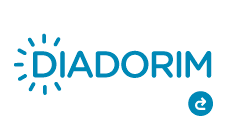HEALTH EDUCATION: INFORMATION TO PREVENT ACCIDENTS WITH SCORPIONS
Resumen
We aimed to describe an experience of developing and applying a Didactic Sequence (DS), which included an educational game designed to study scorpion sting prevention. We developed a didactic game titled "Journey against Scorpionism." The DS unfolded in three stages: firstly, we conducted a dialogued expository class to address the topic of scorpionism. In the second stage, we showcased specimens of scorpions to the students. The third stage involved the application of the didactic game. The project was implemented in five public schools in the city of Governador Valadares, Minas Gerais, Brazil, involving both primary and secondary school students. Approximately 150 students took part in the activities, with an average of 30 students per class. We observed a keen interest among the students regarding the topic, with active participation as they shared stories related to scorpion stings or sought clarification on the subject. This engagement fostered a moment of significant interaction. When we presented the scorpions, there was a palpable enthusiasm for learning about the animal's biology. As the students engaged with the didactic game, we noted that it effectively reinforced the knowledge they had acquired. We believe that these educational initiatives have the potential to contribute to the prevention of scorpionism and, consequently, to reduce mortality resulting from such incidents.
Descargas
Citas
ALMEIDA, F. S.; DE OLIVEIRA, P. B.; DOS REIS, D. A. A importância dos jogos didáticos no processo de ensino aprendizagem: Revisão integrativa. Research, Society and Development, 10, n. 4, p. e41210414309-e41210414309, 2021.
BATISTA, M. V. D. A.; CUNHA, M. M. D. S.; CÂNDIDO, A. L. ANALYSIS OF VIROLOGY IN HIGH SCHOOL BIOLOGY TEXTBOOKS. Ensaio Pesquisa em Educação em Ciências, 12, n. 1, p. 145-158, 2010.
BERGMANN, A. G.; DOMINGUINI, L. Análise do conteúdo serpentes nos livros didáticos de ciências do 7º ano do município de Blumenau. Revista Brasileira de Pesquisa em Educação em Ciências, 15, n. 2, p. 259-273, 2015.
BERTANI, R. Escorpiões do Brasil: lista dos gêneros e espécies de escorpiões registrados para o Brasil (Arachnida, Scorpiones). . GIUPPONI, A. P. L. http://www.ecoevo.com.br/escorpioes.php: ecoevo 2021.
BRASIL, M. D. S., SECRETARIA DE VIGILÂNCIA EM SAÚDE, DEPARTAMENTO DE VIGILÂNCIA EPIDEMIOLÓGICA. Manual de controle de escorpiões. 2009.
CHIPPAUX, J.-P.; GOYFFON, M. Epidemiology of scorpionism: a global appraisal. Acta tropica, 107, n. 2, p. 71-79, 2008.
CHOWELL, G.; DÍAZ-DUEÑAS, P.; BUSTOS-SALDAÑA, R.; MIRELES, A. A. et al. Epidemiological and clinical characteristics of scorpionism in Colima, Mexico (2000–2001). Toxicon, 47, n. 7, p. 753-758, 2006.
CSAPÓ, B. A tudás minősége. Educatio, 3, p. 473-487, 1999.
DA SILVA, L. V.; ALTINO FILHO, H. V.; RIBEIRO, A. G.; DA PENHA RHODES, F. et al. As metodologias ativas e atividades lúdicas na educação básica: da formação docente para a prática pedagógica no PIBID-Matemática. Anais do Seminário Científico do UNIFACIG, n. 2, 2016.
DE ROODT, A. R.; GARCÍA, S. I.; SALOMÓN, O. D.; SEGRE, L. et al. Epidemiological and clinical aspects of scorpionism by Tityus trivittatus in Argentina. Toxicon, 41, n. 8, p. 971-977, 2003.
DO CANTO, C. G. D. S.; NUNES, P. O. C.; DA SILVA RODRIGUES, A. C. O lúdico como ferramenta de aprendizagem de leitura e escrita. Revista eletrônica pesquiseduca, 13, n. 29, p. 284-299, 2021.
DOS SANTOS, A. C.; DE OLIVEIRA SANTOS, J.; DE BRITO ARAUJO, M. J. Lúdico como ferramenta da psicopedagogia no desenvolvimento integral das crianças. Educte: Revista Científica do Instituto Federal de Alagoas, 10, n. 1, p. 1175-1183, 2020.
GUERRA, C.; CARVALHO, L. F.; COLOSIMO, E. A.; FREIRE, H. Analysis of variables related to fatal outcomes of scorpion envenomation in children and adolescents in the state of Minas Gerais, Brazil, from 2001 to 2005. Jornal de pediatria, 84, p. 509-515, 2008.
GUERRA-DUARTE, C.; SAAVEDRA-LANGER, R.; MATAVEL, A.; OLIVEIRA-MENDES, B. B. et al. Scorpion envenomation in Brazil: Current scenario and perspectives for containing an increasing health problem. PLoS neglected tropical diseases, 17, n. 2, p. e0011069, 2023.
KÖREI, A.; SZILÁGYI, S.; TÖRÖK, Z. Integrating didactic games in higher education: benefits and challenges. Teaching Mathematics and Computer Science, 19, n. 1, p. 1-15, 2021.
MARTÍNEZ D, O.; OBAYA V, A. E.; HERNÁNDEZ B, M. P.; PONCE P, R. G. et al. Didactic Game as a Learning Aid Tool of Redox Process in the Level of Higher Middle Education. Online Submission, 12, n. 11, p. 14571-14581, 2020.
NÚÑEZ, I. B.; RAMALHO, B. L.; DA SILVA, I. K. P.; CAMPOS, A. P. N. A seleção dos livros didáticos: um saber necessário ao professor. O caso do ensino de Ciências. Revista Iberoamericana de Educación, 33, n. 1, p. 1-11, 2003.
ORNELAS, R. C.; SILVA, L. D.; DE MACEDO, L. R.; DE MATOS, I. M. Scorpion stings in Minas Gerais (Brazil): a monocentric retrospective study evaluating all envenoming cases of local scorpionism. Wilderness & Environmental Medicine, 2023.
PIAGET, J. Development and learning. Reading in child behavior and development, p. 38-46, 1972.
PRADO, L. Jogos de tabuleiro modernos como ferramenta pedagógica: pandemic eo ensino de ciências. Rev Eletrôn Ludus Sci [Internet]. 2018 [cited 2020 Aug 21]; 2 (2): 26-38.
PUCCA, M. B.; OLIVEIRA, F. N.; SCHWARTZ, E. F.; ARANTES, E. C. et al. Scorpionism and Dangerous Species of Brazil. In: GOPALAKRISHNAKONE, P.;POSSANI, L. D., et al (Ed.). Scorpion Venoms. Dordrecht: Springer Netherlands, 2015. p. 299-324.
QUELHAS, I. M.; PINHEIRO, F. M.; FUNCHAL, A. C. L. Jogo de tabuleiro: uma proposta didática como ferramenta no processo ensino aprendizagem: Board game: a didactic proposal as a tool in the learning teaching process. Revista Enfermagem Atual In Derme, 87, n. 25, 2019.
SANDRIN, M. D. F. N.; PUORTO, G.; NARDI, R. Serpentes e acidentes ofídicos: um estudo sobre erros conceituais em livros didáticos. Investigações em ensino de ciências, 10, n. 3, p. 281-298, 2005.
SZILÁGYI, S.; KÖREI, A.; TÖRÖK, Z., 2022, A Game-Based Learning Project-Calculating Limit of Sequences with the Didactic Game LimStorm. Springer. 921-932.
DECLARAÇÃO DE ORIGINALIDADE E DIREITOS AUTORAIS
Declaro que o presente artigo é original, não tendo sido submetido à publicação em qualquer outro periódico nacional ou internacional, quer seja em parte ou em sua totalidade.
Os direitos autorais pertencem exclusivamente aos autores. Os direitos de licenciamento utilizados pelo periódico é a licença Creative Commons Attribution 4.0 (CC BY ): são permitidos o acompartilhamento (cópia e distribuição do material em qualqer meio ou formato) e adaptação (remix, transformação e criação de material a partir do conteúdo assim licenciado para quaisquer fins, inclusive comerciais.

Recomenda-se a leitura desse link para maiores informações sobre o tema: fornecimento de créditos e referências de forma correta, entre outros detalhes cruciais para uso adequado do material licenciado.

















